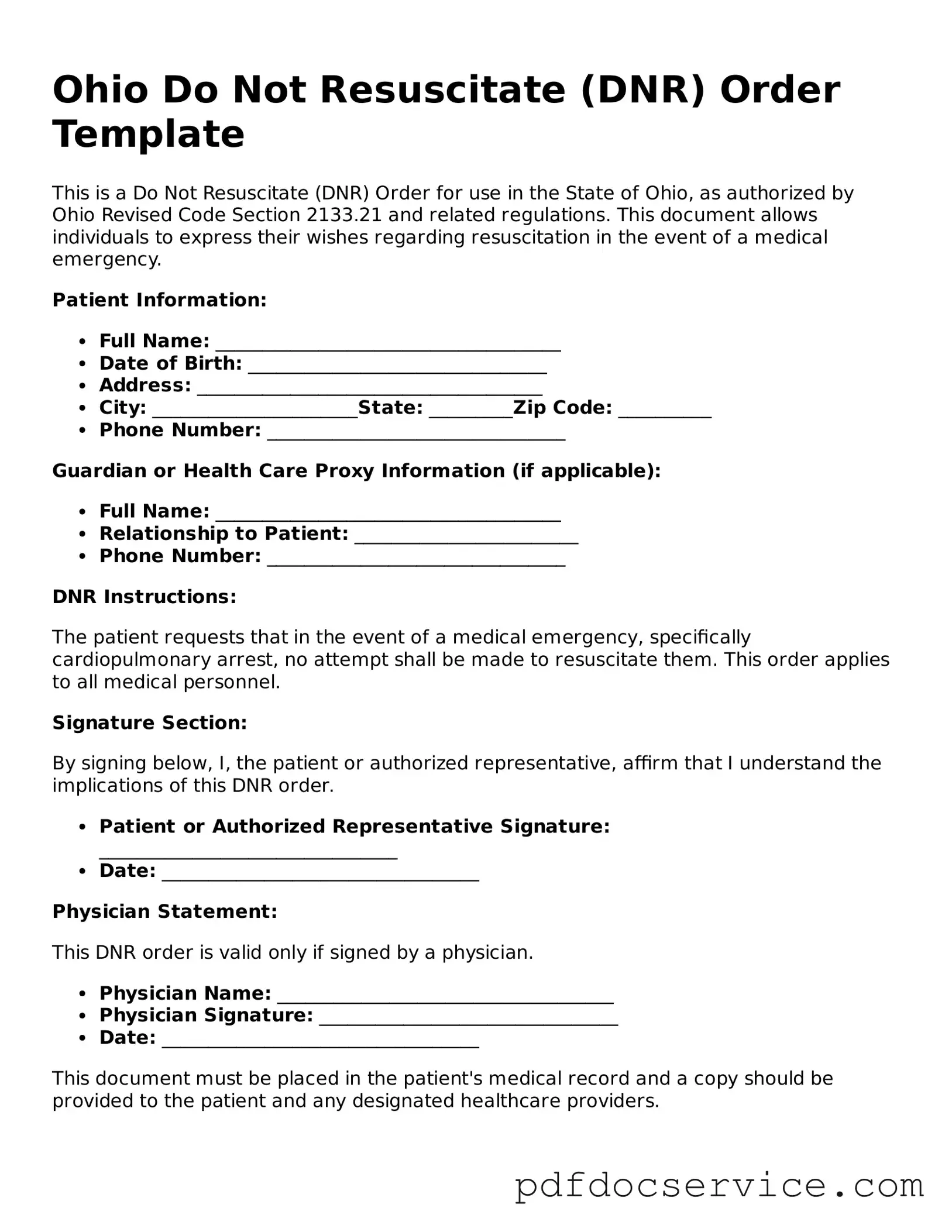What is a Do Not Resuscitate (DNR) Order in Ohio?
A Do Not Resuscitate Order is a legal document that informs healthcare providers not to perform cardiopulmonary resuscitation (CPR) if a patient's heart stops beating or they stop breathing. In Ohio, this order is recognized and must be followed by medical professionals in emergency situations.
Who can request a DNR Order?
In Ohio, a DNR Order can be requested by a patient who is at least 18 years old and has the capacity to make informed decisions about their healthcare. If the patient is unable to make decisions, a legal guardian or a person with durable power of attorney for healthcare can request the order on their behalf.
You can obtain a DNR Order form from various sources, including:
-
Healthcare providers, such as hospitals or doctors' offices
-
Ohio Department of Health website
-
Local health departments
It is important to ensure that the form is the official version recognized by the state.
The DNR Order form typically requires the following information:
-
The patient's name and date of birth
-
The name of the physician who is issuing the order
-
Signature of the patient or their authorized representative
-
The date the order is signed
Additional information may be included to clarify the patient's wishes regarding other medical interventions.
Does a DNR Order apply outside of a hospital setting?
Yes, a DNR Order in Ohio is valid in both hospital and non-hospital settings. However, the order must be properly documented and recognized by healthcare providers. In non-hospital settings, it is advisable to keep the DNR form readily accessible.
Can a DNR Order be revoked?
Yes, a patient can revoke a DNR Order at any time. This can be done verbally or in writing. It is essential to communicate the revocation to all healthcare providers and ensure that a new order is created if the patient wishes to have resuscitation performed.
What if I change my mind about resuscitation?
If you change your mind about resuscitation, it is crucial to inform your healthcare provider. Revoking the DNR Order is straightforward, but you should ensure that all relevant parties are aware of your new wishes. Keeping a copy of the revocation with you can help avoid confusion in emergency situations.
Will a DNR Order affect other medical treatments?
A DNR Order specifically addresses resuscitation efforts and does not affect other medical treatments. Patients can still receive necessary medical care, such as pain management, medications, and other interventions, even if they have a DNR Order in place.
Is a DNR Order the same as a living will?
No, a DNR Order and a living will are not the same. A DNR Order specifically pertains to resuscitation efforts, while a living will outlines a person's wishes regarding medical treatment in situations where they are unable to communicate their preferences. Both documents can work together to ensure that a patient's healthcare wishes are honored.
How can I ensure my DNR Order is honored?
To ensure that your DNR Order is honored, consider the following steps:
-
Discuss your wishes with your healthcare provider and family members.
-
Keep a copy of the DNR Order in a place where it can be easily accessed.
-
Wear a medical alert bracelet or necklace indicating your DNR status.
Clear communication and proper documentation are key to making sure your wishes are respected in critical situations.
